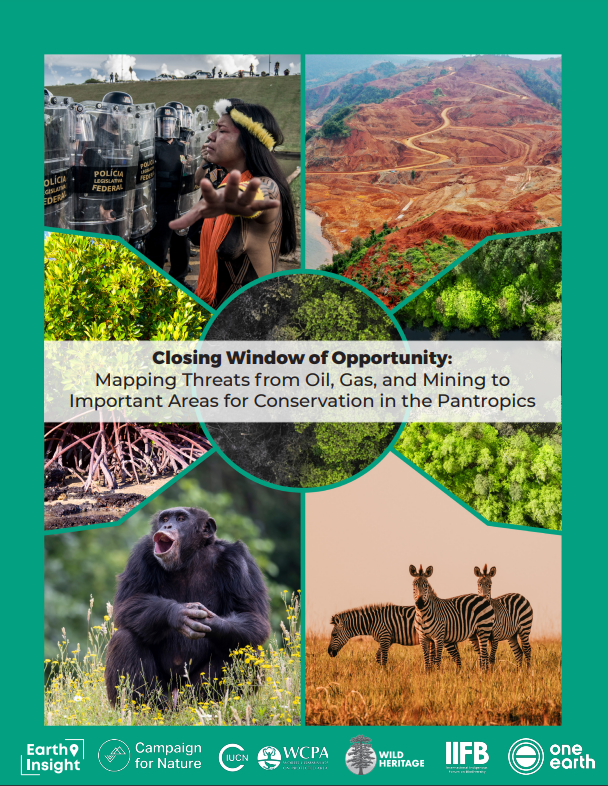
The global race to safeguard irreplaceable ecosystems is nearing a critical threshold, and the window to protect vital areas for climate stability, biodiversity, and human wellbeing is rapidly closing. Growing pressure from extractive industries, including oil, gas, and mining, is putting irreplaceable ecosystems and Indigenous Territories at risk, especially across the pantropical belt. Protected and conserved areas are well-documented to be important safe havens for nature amidst an ever-expanding industrial footprint in terrestrial ecosystems.
As it stands, 17.5% of Earth’s land and freshwater are currently protected1 , but more targeted and ambitious conservation measures are required. Areas of high ecological significance, such as undisturbed tropical forests, Key Biodiversity Areas (KBAs), and Indigenous Territories need to be prioritized for protection — but many of these regions are also abundant in natural resources, leading to competing interests between conservation and resource extraction. The expansion of industrial activity into these areas could push ecosystems past critical tipping points 2, leading to environmental collapse and threatening traditional cultures. Once lost, these ecosystems and the services they provide, including clean water, fertile soils, and carbon storage, are extremely difficult, if not impossible, to restore.
This report maps the alarming overlap of oil, gas, and mining concessions with KBAs, high-integrity forest landscapes, protected areas, Indigenous Territories, and other areas important for conservation across the Amazon Basin, Congo Basin, and Southeast Asia. These regions harbor immense biodiversity and store vast amounts of carbon, playing a vital role in regulating the global climate and sustaining life on earth. They are also home to Indigenous peoples and local communities whose survival, livelihoods, and cultures are deeply intertwined with the natural environment.












